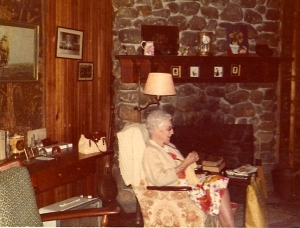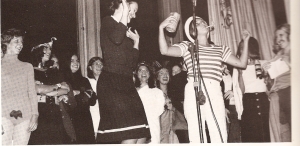![]() I have taken a good long break from writing, and not sure exactly why. Shoot, my last post was about the election of Pope Francis, and look at all he’s done since then! That tells you how long of a writer’s break I’ve taken.
I have taken a good long break from writing, and not sure exactly why. Shoot, my last post was about the election of Pope Francis, and look at all he’s done since then! That tells you how long of a writer’s break I’ve taken.
But from time to time I’ll check stats here and I’ve noticed that the most popular, most viewed post by far is this one: “If you like Eckhart Tolle, Byron Katie, With a Touch of Bill Hicks… You’ll love Anthony deMello.” It makes me think that people get to the end of books like The Power of Now and realize there’s a whole other world out there where it may be possible to let go of attachments, be one with the present moment, and accept what is.
I hope that some people have been drawn to Anthony deMello as a result of reading that post. He is so accessible, so light and yet so deep. Since my last post, I learned that his brother, Bill deMello, wrote a biography about him. It is called The Happy Wanderer, and it is a great, loving account of the road that “Tony” deMello took in his journey to mystic awareness. But I will talk more about that later.
I’ve explored other deMello books in the meantime as well: The Way to Love: The Last Meditations of Anthony deMello and Sadhana: A Way to God.
- The Way to Love is a series of short chapters, or meditations on topics such as how to unloose the false beliefs that keep us from happiness; dealing with feelings of insecurity, how essential it is to cleave ourselves from our attachments before we can love.
- Sadhana: A Way to God is a more structured series of spiritual exercises, described by Amazon as “Truly a one-of-a-kind, how-to-do-it book, this small volume responds to a very real hunger for self-awareness and holistic living. It consists of a series of spiritual exercises for entering the contemplative state — blending psychology, spiritual therapy, and practices from both Eastern and Western traditions.” Apparently the word Sadhana means “A means of accomplishing something.” Very useful tool.
Once you’ve read a couple of these books, you may be inspired to check out the credentials of the author. After all, f you want to learn to paint, you look to Picasso. If you want to learn to build a building, you look to Frank Lloyd Wright. If you want want spiritual awareness and enlightenment, you look to one who has walked the walk.
And that’s where Bill deMello’s The Happy Wanderer comes in. Bill gives us a window into the life of his extraordinary brother, but he does not rely on just his memory or experience with him. He was just a young boy when his brother left home, so Bill has done extensive research and conducted interviews with friends and colleagues in the Jesuit community who knew his brother in order to give us an accurate and multi-dimensional picture of who he was. At the same time, Bill’s love and appreciation for his brother shines through the book, which becomes both tribute to Tony and spiritual inspiration for the reader.
“The Happy Wanderer” title comes from a song deMello loved. And it is an apt title for how he lived his life, as a person with no attachments, a wanderer in God’s world; joyfully inspiring us to pick up our knapsacks and bask in the beauty of every moment. His books take us with him on that journey.
And by the way, click this link to go to Bill’s Facebook tribute to his brother’s writings–and “like” it while you’re there!























Recent Comments